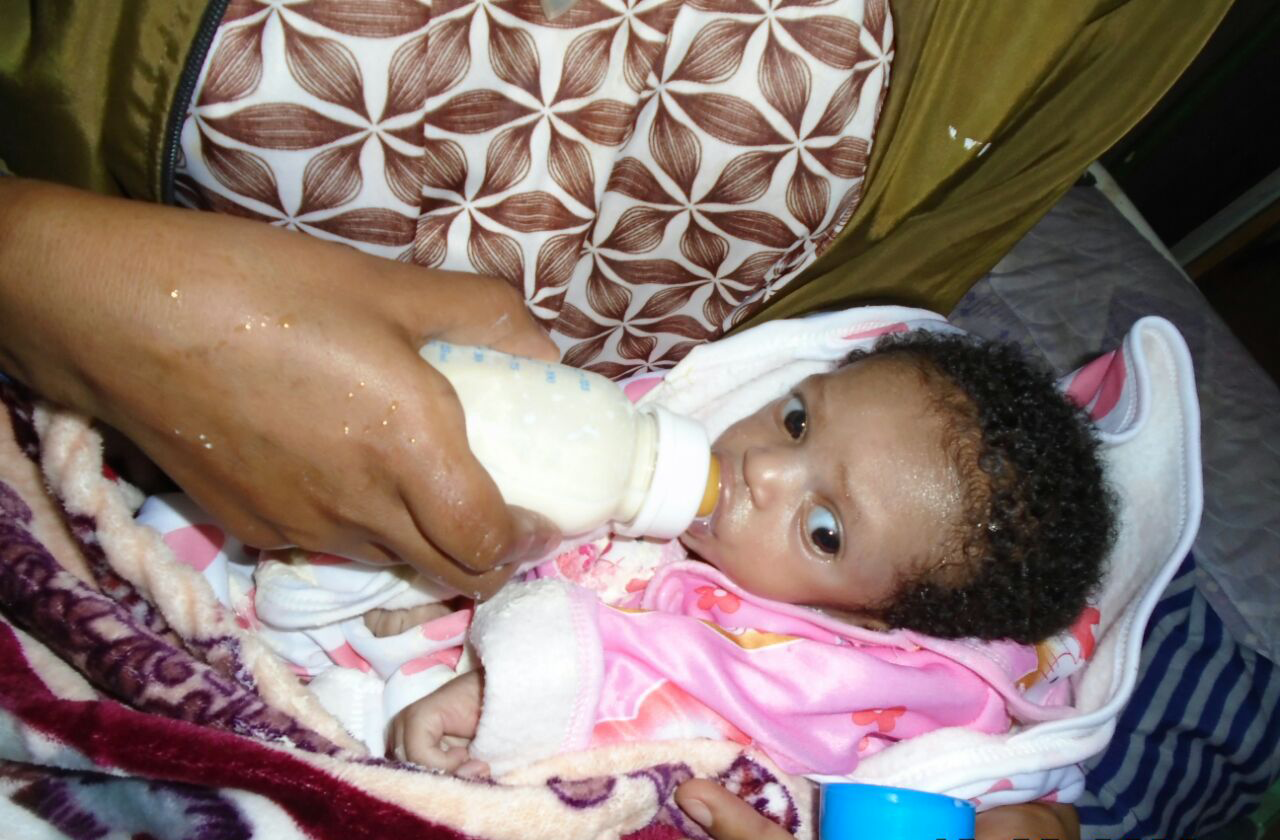Liya* is hungry. But she’s more than just hungry – she’s wasting away. She needs consistent food now. She may not make it much longer.
Liya’s parents didn’t have enough food for her. And this caused her to get sick. Which caused her to become more and more malnourished. It’s a vicious cycle. She needs emergency food and medical care.
Liya is just one of thousands of young children in Ethiopia who is malnourished and needs help.
Because of the COVID-19 pandemic, children’s nutrition is — now more than ever — a primary concern.
COVID-19 and Malnutrition in Ethiopia
COVID-19 has had a multitude of impacts on children and families living in poverty, and one of the biggest is hunger. Families lost their jobs and couldn’t purchase or grow food. Children stopped attending health centers where basic health issues can be treated and stopped attending Holt-supported schools where they received at least one quality meal and access to clean drinking water each day. Many families were already struggling before the pandemic, so the very abrupt stop to their already small incomes resulted in immediate hunger in the household.
When children are abruptly cut off from consistent access to high quality food, this can result in acute malnutrition.
And this is exactly what’s been happening to thousands of children in Ethiopia.
A Hunger Emergency in Ethiopia
Across rural communities in Ethiopia, children began to dramatically lose weight. As their bodies used up the reserve energy stored in their fat and muscles, they began to waste away — just like what happened to Liya.
The fear of acute malnutrition spreading wider and wider led Holt staff in Ethiopia and our government partners to mobilize an emergency response.
Screening Children for Malnutrition
Holt staff in Ethiopia decided to start by screening children under 5 years old for malnutrition. To achieve this they worked with skilled community health workers from eight health centers and eight health posts in rural Ethiopia. But because families were not coming to the health centers, they had to adapt their plans to reach families and children. Equipped with personal protective gear, health professionals went door to door — safely screening children for malnutrition.

They measured children’s arm circumference, which assesses muscle and fat loss. One by one, they reached every child they could.
Incredibly, they reached over 9,000 children under the age of 5. And as they conducted malnutrition screenings, they also shared vital COVID-19 information to families to help them understand how to best keep themselves and their communities safe and healthy.
Of the over 9,000 children screened for malnutrition, 3,754 were identified as being acutely malnourished.
However, malnutrition screenings were just the first step.
Of the over 9,000 children screened for malnutrition, 3,754 were identified as being acutely malnourished.
The impact of being malnourished was already starting to show in children’s bodies. Their arms, legs and faces were thin, yet their bellies protruded. Some children’s hair was discolored and patchy. Young children, who should be running and playing and full of energy, were instead lethargic with listless eyes.
These children need urgent attention.
How You Can Help
In this last month of 2020, Holt donors have the chance to help feed and heal children suffering from malnutrition in Ethiopia and around the world.
Based on their malnutrition screening results, some children in Ethiopia were admitted to the Holt-supported Mother and Child Hospital where they received fluids and began to reintroduce nutrients to their system. But solving the malnutrition requires both emergency and ongoing services.
“How painful and upsetting to care for children, [sick] only for lack of adequate food,” says Nigat, a nutritionist and care provider at the Holt-supported Mother and Child Hospital in rural Ethiopia. Since the malnutrition screenings, she has cared for the most malnourished of the children, who required immediate medical attention.
In addition to emergency services for children, Nigat knows that the solution must involve entire families and communities.
“It is equally touching to seeing a depressed mother staying with her child at the child rehabilitation center lacking for not only basic knowledge and practices on child feeding but, means for both food and health security in the future as well.”
The solution for these children also depends on the generosity of people across the world. People like you.
When you give to the President’s Top Priority Fund Campaign for Children 2020, you will help provide the following (and more) to children in Ethiopia, and all around the world:
- Emergency food
- Family nutrition education
- Community malnutrition screenings
- Medical referrals
- Care at the Holt-supported Mother and Child Hospital
Children in Ethiopia and around the world deserve the chance to grow healthy and strong in 2021. Learn more about the President’s Top Priority Fund Campaign for Children 2020 here, and how you can help.
*Name changed for confidentiality






